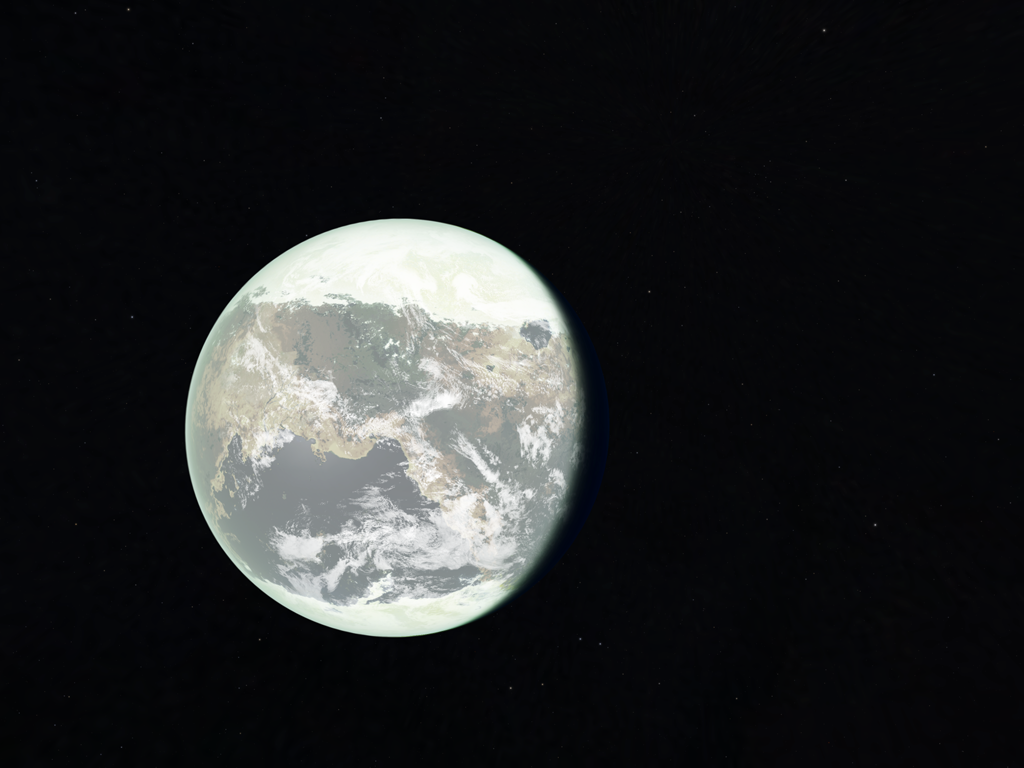We're open daily! View holiday hours
Science News
Do Super-Earths Look Like Earth?
January 8, 2014
by Ryan Wyatt

Welcome to my third update from the 223rd American Astronomical Society meeting in National Harbor, Maryland—the largest gathering of astronomers in the world! If you’re keeping track of the news this week, you should see tons of astronomical updates, in addition to my posts for Science Today.
In yesterday’s write-up, I described the amazing new Gemini Planet Imager that’s just now coming online: it will give astronomers a brilliant new view of exoplanets (planets orbiting stars other than the Sun, that is), but even with our most powerful telescopes, planets will basically show up as a pixel. Of course, most press releases come with artwork that helps us imagine these other worlds, but astronomers want a deeper understanding of what these places are like.
Scientists study data from the exoplanets we have observed, but they also devise computer simulations that can recreate conditions on exotic planets. For example, we have discovered many so-called “Super-Earths” that likely have solid surfaces but with sizes (and masses) much greater than Earth. And their similarity to our home world makes them tantalizing places to think life might exist. So how can we use computer simulations to help us understand how closely our hopes hew to reality?
In a press conference, Nick Cowan from Northwestern University asked, “Do Super-Earths Look Like Earth?” (Or, as his research paper puts it, “Super-Earths Need Not Be Waterworlds,” which is not a reference to a Kevin Costner box office flop but rather just to say that these planets need not be covered entirely in water.) Largely, Cowan is asking whether these plus size planets would have the mix of continents and oceans that characterize Earth’s geography.
(This is more than just an aesthetic question. Earth’s deep carbon cycle acts like a thermostat, with carbon dioxide moving between atmosphere, land, and ocean in a way that keeps our climate stable. As Cowan has previously published, a “waterworld” would lack this mechanism and possibly experience much more severe swings in climate… Which seems unappealing for life evolving on such a place.)
Cowan made some assumptions to simulate conditions on hypothetical worlds. His “Super-Earth” has twice Earth’s radius and ten times its mass, which means that gravity on the surface of the Super-Earth is about three times what you’re experiencing right now (assuming you’re not reading this on the International Space Station). A stronger pull of gravity means that mountain ranges won’t tower quite as high, nor canyons as deep, so the Super-Earth’s topography will be about one-third Earth’s.
So if the Super-Earth is made of the same stuff as Earth—with the same ratio of water to everything else—then oceans ten times as voluminous as Earth’s would wash over the Super-Earth’s wimpier topography and create (you guessed it) a waterworld!
But Cowan points out that Earth’s interior contains water, too, however, and water in fact enters Earth’s core through the sea floor. As it turns out, sea floor pressure depends on water depth and gravity, so one might expect that the oceans on a Super-Earth might force more water into the planet’s interior.
After running computer simulations far more nuanced than what we’ve outlined here, Cowan and his collaborators found that their Super-Earth would develop water-rich mantles with surfaces very similar to Earth—continents, climate stability, the whole shebang!
(One of the factors they tinkered with was the quantity of water. We don’t even know exactly where water on Earth came from, but Cowan defended his simulation saying, “as a shot from the hip, you make a planet from the same stuff as Earth.” Besides, they “played with the amount of water by a factor of 1,000” in different simulations, and their paper presents a range of outcomes depending on how much water exists on their hypothetical Super-Earth.)
Of course, the simulations simplify the many processes that affect the evolution of a planet, and they also assume an important process that takes place here on Earth—namely, plate tectonics! The recycling of crust into Earth’s core definitely moves water around in addition to everything else, but Earth is also the only planet in the Solar System to exhibit long-term tectonic activity, so we don’t know how rarely it occurs on the exoplanets we are beginning to discover. (But if you want to know how plate tectonics affects life on Earth, swing by the Academy’s Earthquake exhibit and planetarium show to learn more!)
Cowan also pointed out that future observations can potentially confirm whether exoplanets have oceans and continents. “Clouds are grey, water is black—a little blue, but mostly black—and continents are red,” he noted, and even if a future telescope only resolves a single-pixel exoplanet, its changing appearance over time (e.g., much as Earth rotates and presents different ratios of continents clouds, and oceans to a given line of sight) could help us learn about its surface. The aforementioned Gemini Planet Imager won’t manage such a feat, but a space-based counterpart in the future just might!
And the possibility of life on such a Super-Earth? Cowan mused aloud in the press conference about fighter pilots being able to handle three g’s, so by his reckoning, microscopic life ought to be able to deal with it.
Ryan Wyatt is Director of Morrison Planetarium and Science Visualization at the California Academy of Sciences.
Image of Gliese 581d from the Morrison Planetarium production Fragile Planet.